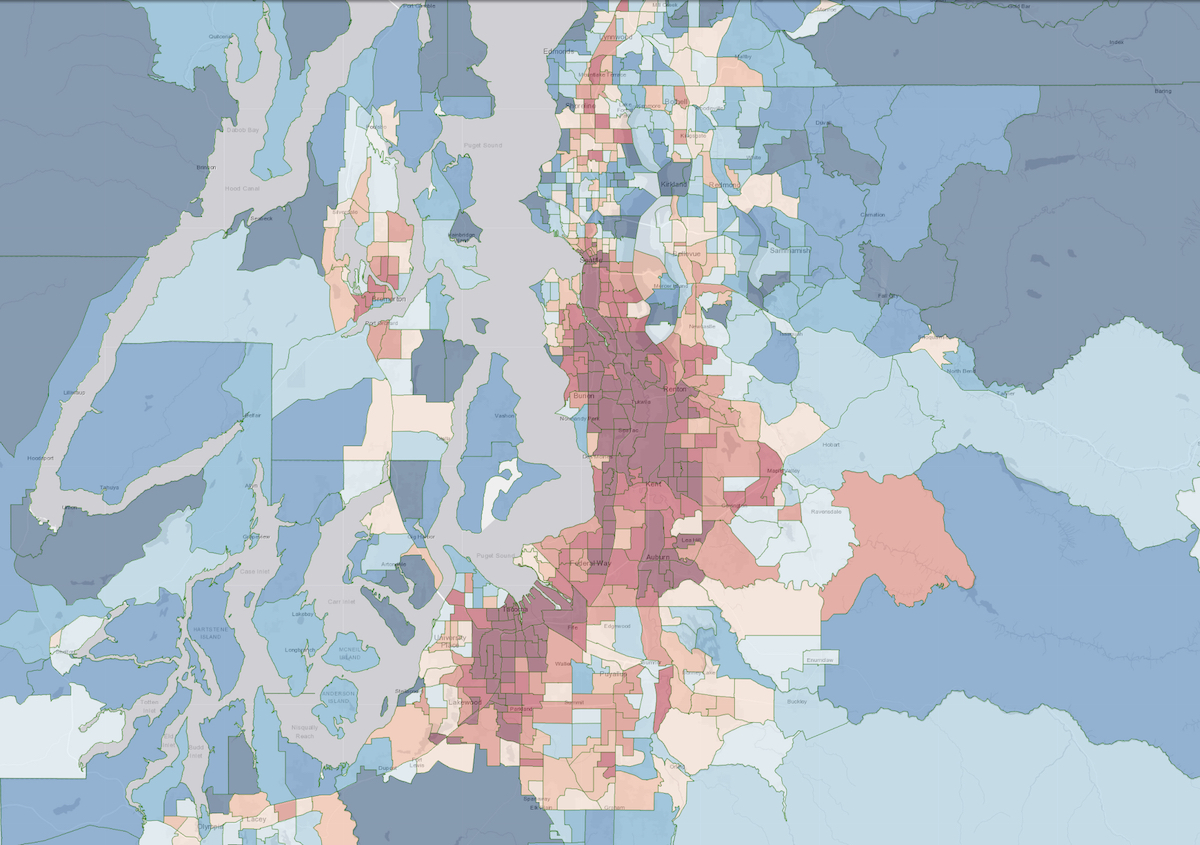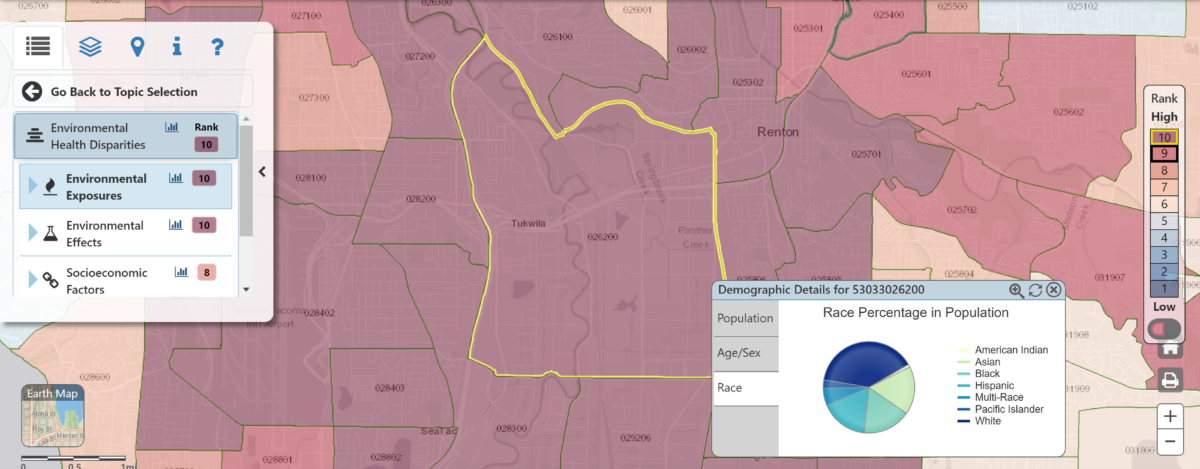
Washington had the chance to join the ranks of California and Oregon in directly requiring the state to address environmental inequities that affect low-income communities and communities of color.
But that will have to wait, and the state is instead creating a task force on environmental justice, that also will include affected industries.
Last spring state legislators and environmental justice organizations tried to write environmental justice into law with the Healthy Environment for All (HEAL) Act. But the original bill received pushback from industry and business representatives.
An amended version of the bill, passed in April, called for the creation of a task force to craft guidelines aimed to include addressing the environmental effects of policies on communities most affected — often communities of color and low-income communities.
Front and Centered, a coalition of more than sixty environmental justice organizations in the state, headed the push for the HEAL Act. State Sen. Rebecca Saldaña (D-37) was the primary author of the bill. In its original form, the bill aimed to codify a definition of environmental justice into state law. That definition would have been able to guide regulations that would affect state agencies — from the Department of Health to the Department of Transportation — and how they go about environmentally relevant work.
Environmental justice is already codified in federal law. The Environmental Protection Agency’s definition of environmental justice is “the fair treatment and meaningful involvement of all people regardless of race, color, national origin, or income, with respect to the development, implementation, and enforcement of environmental laws, regulations, and policies.”
But not all states have adopted the federal policy.
Saldaña said the original bill was amended largely because it infuriated business and industry stakeholders.
“Our original bill was directly countering [their interests] and trying to make sure that, actually, policies should be done based on data and the health of our communities,” she said.
Representatives from the Building Industry of Association of Washington, Washington Water Policy Alliance, Association of Washington Businesses and Northwest Pulp and Paper Association, testified against the bill.
To balance the business interests, the bill morphed into creating a task force, with representatives from labor groups, businesses and tribal leadership along with state agency representatives and community organizations and leaders.
The final House bill report says the bill stops short of changing regulations, but would “add value to the agency process by looking at the impact to communities.”
The HEAL Act task force is currently being convened as Governor Jay Inslee appoints representatives to the team. The task force has until the end of the year to draft recommendations for state agencies.
Tracking inequity
The task force will base many of its recommendations on the state’s environmental health disparities map, which was created by the Washington Tracking Network and unveiled earlier this year.
The map uses national and state data to show how different neighborhoods rank in their negative exposure to environmental hazards like toxic substance exposure and air quality. The map measures nineteen impacts including traffic density, proximity to hazardous waste, income, race, and air quality. Areas on the map in dark red are the worst for dealing with health impacts influenced by environmental factors. For example, users could look up air pollution to see which areas fare the worst. They can also combine that search with the area’s demographic data, including race, age and income.
The map shows that many of the neighborhoods with the greatest impacts from pollution have a significant population made up of people of color, immigrants and low-income families. Those numbers fall in line with a nationwide trend where low income and communities of color are at higher risk for health affects related to environmental exposures, like respiratory and cardiovascular illness as a result of living with poor air quality.
In Tukwila for example, 61% of the population identify as people of color and mixed race. The census block (pictured below) is ranks high for environmental health disparities.

The map is the result of two years of collaboration between the University of Washington Department of Environmental and Occupational Health Sciences, Front and Centered, the Washington State Department of Health, Puget Sound Clean Air Agency, and the Washington State Department of Ecology.
Saldaña said the goal of the task force is “making sure they [agencies involved in climate justice work] are not just working in silos but they are engaging impacted communities to be able to help shape and inform the way that this tool is used.”
Agencies can use data from the maps and other sources to identify where to address the disproportionate exposure to health impacts.
Hope for future laws
While this year’s HEAL Act fell short of writing environmental justice accountability to into state law, Saldaña says at least it bring the state closer to its final goal.
“I do hope we will actually introduce in the future a policy that would actually put into statue environmental justice [and] include that framework to determine how we make investments, and what policies we put in place,” she said.

